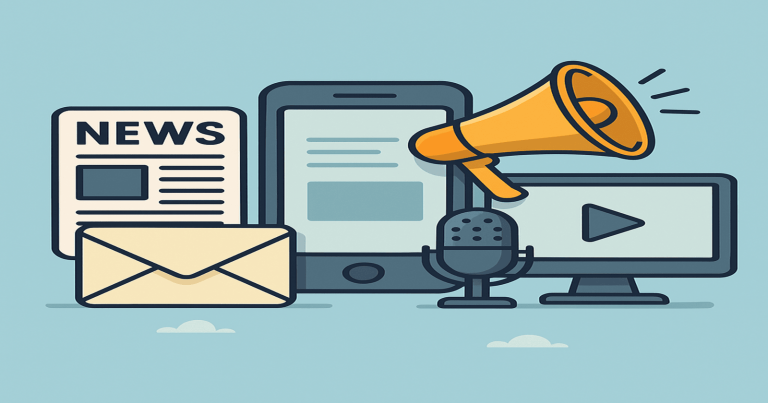The means of communication are the different tools, systems, and methods that humans use to exchange messages, ideas, emotions, and information. Communication is one of the most important parts of human life. It helps us understand others and also express our thoughts and feelings. In today’s fast world, communication connects people living in the same place and those living across the globe. In the past, people used pigeons, smoke signals, and messengers to send important messages. With time, people started using letters and newspapers. Now, modern tools like smartphones, emails, and social media help us send messages instantly. Whether it is personal or official work, communication plays a key role in every part of our lives.
What is Communication?
Communication is the process of sending and receiving messages between two or more people. It can be done using words, signs, pictures, or expressions. It helps people understand each other’s thoughts, ideas, and emotions. Good communication happens when the message is clear and the other person understands it well.
Sender
The sender is the person who creates and sends the message. The sender must think clearly and choose the right words or actions to make the message easy to understand.
Message
The message is the actual information or idea that the sender wants to share. It can be a thought, a piece of news, a question, or a feeling.
Medium
The medium is the method used to send the message. This can include speaking, writing, texting, calling, or using gestures and pictures. Choosing the correct medium is important to make sure the message reaches the receiver properly.
Receiver
The receiver is the person who gets the message. The receiver must be able to understand what the sender means. Communication is complete only when the receiver understands the message in the correct way.
Feedback
Feedback is the reply given by the receiver. It tells the sender whether the message was understood or not. Feedback helps in improving communication and making it more effective.

Means of Communication
Means of communication are the ways or tools we use to send and receive messages. These can be old or new, slow or fast. They help people connect, share, and stay updated with each other. We can divide them into two groups: traditional and modern means of communication.
Traditional Means of Communication
Traditional means were used before modern tools like smartphones and the internet. They were slower but very important in the past and are still used in many parts of the world.
Letters
Formal and personal letters were one of the most popular ways to send information. People wrote letters by hand and posted them using a postal service. It took days or weeks for letters to reach the receiver. Though slower, they were helpful in maintaining long-distance communication.
Newspapers
Newspapers are printed every day to inform people about current events. They carry news about politics, sports, weather, and other topics. Newspapers also include advertisements and job listings. They are still used widely in both cities and villages.
Radio
Radio uses sound to share messages. People can listen to news, music, stories, and educational programs. It is useful in areas where there is no access to television or the internet.
Television
Television is an audio-visual tool that broadcasts news, entertainment, and education. It plays a key role in mass communication. People can see and hear information, which makes it more engaging.
Postcards and Telegrams
Postcards were used for short messages, and telegrams were used for urgent communication. Although not commonly used today, they were important in the past.
Modern Means of Communication
Modern communication tools are fast, easy to use, and help people connect instantly. These are used in homes, schools, offices, and businesses.
Mobile Phones
Mobile phones allow people to talk and send text messages. Today’s smartphones can also take photos, record videos, and connect to the internet. They are one of the most popular means of communication.
Internet
The internet has changed the way people communicate. With internet access, people can send emails, join video calls, and chat on apps like WhatsApp or Facebook. It makes communication fast and global.
Emails
Emails are digital letters that people send using the internet. They are useful for both personal and official communication. People can attach documents, photos, and other files to their emails.
Social Media
Platforms like Instagram, Twitter, and Facebook are used to share photos, messages, and videos with a wide audience. Social media allows people to stay updated and connected with friends, family, and the world.
Video Conferencing
Video conferencing apps like Zoom and Google Meet help people talk face-to-face even if they live far apart. It is very helpful for schools, companies, and online meetings.
Types of Communication
Communication can happen in different ways. Each type of communication helps people share information in its way. Knowing these types makes communication better and more useful.
Verbal Communication
Verbal communication uses spoken or written words. It is one of the most common and effective forms of communication.
In spoken communication, people talk face-to-face or through phone calls, group discussions, or meetings. This is useful when you need to express your ideas clearly and get quick feedback.
Written communication includes letters, books, emails, notes, or text messages. It is used in schools, businesses, and official work. Written communication keeps records and avoids confusion. It is very important in situations where information must be correct and permanent.
Non-Verbal Communication
Non-verbal communication uses body movements, facial expressions, hand signs, eye contact, and gestures to send messages. It does not use words but still communicates clearly.
For example, nodding your head shows agreement. Smiling shows you are happy. Frowning can show anger or confusion. Using hands while talking can also make the message stronger.
Non-verbal communication adds feelings to words and makes conversations more interesting. It is useful when you cannot speak or when you want to show how you feel without using words.
Visual Communication
Visual communication uses pictures, charts, graphs, videos, and signs to share information. It helps people understand complex ideas easily.
In schools, teachers use diagrams and maps to explain topics. In offices, graphs show sales and results. Traffic signs on roads also use visual communication to guide drivers.
This type of communication is useful for people who cannot read or speak the same language. It is clear, quick, and easy to remember.
Formal Communication
Formal communication is used in offices, schools, and official places. It follows rules, uses polite language, and has a fixed structure.
For example, when a principal sends a circular to students or a manager sends an email to employees, it is formal communication. It is often written but can also be spoken during official meetings or conferences.
Formal communication avoids confusion. It is recorded and helps in keeping proper information for future use. It is trusted because it is organized and professional.
Informal Communication
Informal communication happens between friends, family, or people you know well. It does not follow any fixed rules. It is friendly, relaxed, and simple.
People use informal communication while chatting, texting, or talking in a casual way. It can happen at home, in the playground, or even during lunch breaks at work.
Informal communication builds relationships and trust. It helps people feel free and comfortable while talking. Though casual, it is very important in daily life.
Importance of Communication
Communication is important in every part of life. It helps us connect, learn, work, and grow. Whether you are a student, worker, or parent, communication is key to success and happiness.
In Personal Life
Communication helps us share our feelings and solve problems. It builds trust and love in families and friendships. When people talk clearly, there is less chance of misunderstanding. Listening is also a part of good communication in personal life.
In Education
Teachers use communication to explain lessons. Students use it to ask questions, take part in group work, and give answers. Schools share notices and exam details through communication. Strong communication improves learning and builds confidence in students.
In Workplaces
In offices and factories, communication helps people do their jobs better. It keeps teams informed and helps them work together. Managers use it to give tasks, and employees use it to report progress. Good communication at work makes tasks faster and helps solve problems quickly.
In Business
In business, communication is used to share ideas, attract customers, and sell products. Advertisements, websites, and customer service all use strong communication. It helps build trust and increases profits.
In Society
Governments use communication to inform people about rules, health, and education. News channels, websites, and social media help people know what is happening. Communication connects different parts of society and builds unity.
Means of Communication FAQs
Q1: What are the means of communication?
Means of communication are the tools and methods we use to send and receive messages like phones, emails, newspapers, or letters.
Q2: What is the difference between traditional and modern communication?
Traditional communication is slower and includes letters, newspapers, and radio. Modern communication is fast and includes mobile phones, the internet, and social media.
Q3: Why is communication important in school?
It helps teachers explain, students understand, and everyone stays informed about activities and exams.
Q4: What is verbal communication?
It is communication that uses spoken or written words to share ideas or messages.
Q5: Can communication happen without speaking?
Yes, through non-verbal and visual methods like signs, pictures, and body movements.


